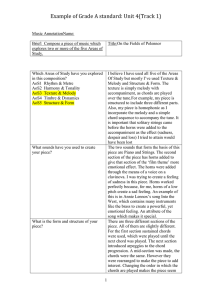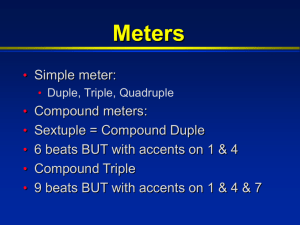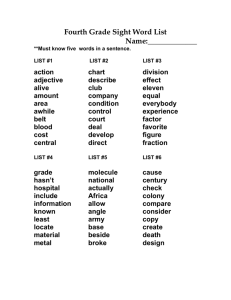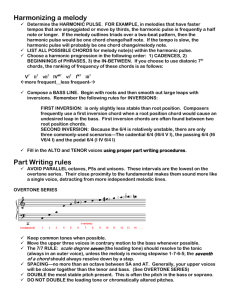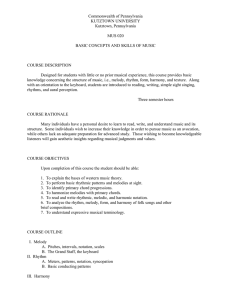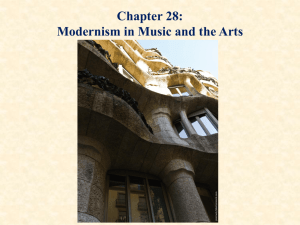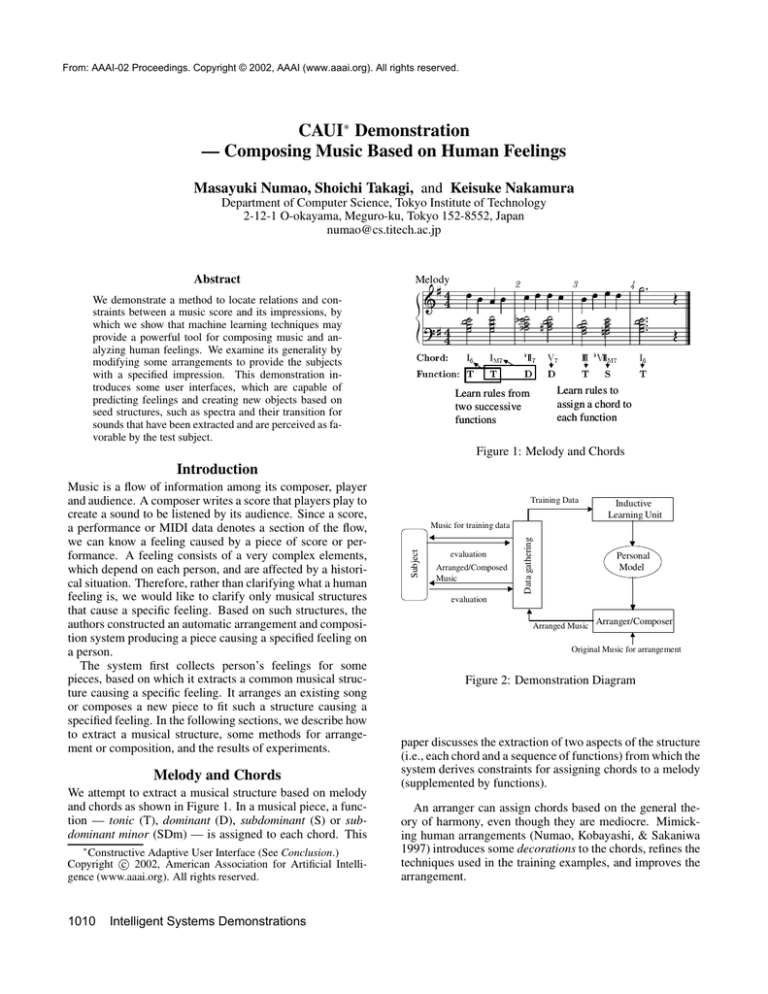
From: AAAI-02 Proceedings. Copyright © 2002, AAAI (www.aaai.org). All rights reserved.
CAUI∗ Demonstration
— Composing Music Based on Human Feelings
Masayuki Numao, Shoichi Takagi, and Keisuke Nakamura
Department of Computer Science, Tokyo Institute of Technology
2-12-1 O-okayama, Meguro-ku, Tokyo 152-8552, Japan
numao@cs.titech.ac.jp
Abstract
Melody
We demonstrate a method to locate relations and constraints between a music score and its impressions, by
which we show that machine learning techniques may
provide a powerful tool for composing music and analyzing human feelings. We examine its generality by
modifying some arrangements to provide the subjects
with a specified impression. This demonstration introduces some user interfaces, which are capable of
predicting feelings and creating new objects based on
seed structures, such as spectra and their transition for
sounds that have been extracted and are perceived as favorable by the test subject.
Learn rules to
assign a chord to
each function
Learn rules from
two successive
functions
Figure 1: Melody and Chords
Introduction
Melody and Chords
We attempt to extract a musical structure based on melody
and chords as shown in Figure 1. In a musical piece, a function — tonic (T), dominant (D), subdominant (S) or subdominant minor (SDm) — is assigned to each chord. This
∗
Constructive Adaptive User Interface (See Conclusion.)
c 2002, American Association for Artificial IntelliCopyright gence (www.aaai.org). All rights reserved.
1010
Intelligent Systems Demonstrations
Training Data
Inductive
Learning Unit
evaluation
Arranged/Composed
Music
Data gathering
Music for training data
Subject
Music is a flow of information among its composer, player
and audience. A composer writes a score that players play to
create a sound to be listened by its audience. Since a score,
a performance or MIDI data denotes a section of the flow,
we can know a feeling caused by a piece of score or performance. A feeling consists of a very complex elements,
which depend on each person, and are affected by a historical situation. Therefore, rather than clarifying what a human
feeling is, we would like to clarify only musical structures
that cause a specific feeling. Based on such structures, the
authors constructed an automatic arrangement and composition system producing a piece causing a specified feeling on
a person.
The system first collects person’s feelings for some
pieces, based on which it extracts a common musical structure causing a specific feeling. It arranges an existing song
or composes a new piece to fit such a structure causing a
specified feeling. In the following sections, we describe how
to extract a musical structure, some methods for arrangement or composition, and the results of experiments.
Personal
Model
evaluation
Arranged Music
Arranger/Composer
Original Music for arrangement
Figure 2: Demonstration Diagram
paper discusses the extraction of two aspects of the structure
(i.e., each chord and a sequence of functions) from which the
system derives constraints for assigning chords to a melody
(supplemented by functions).
An arranger can assign chords based on the general theory of harmony, even though they are mediocre. Mimicking human arrangements (Numao, Kobayashi, & Sakaniwa
1997) introduces some decorations to the chords, refines the
techniques used in the training examples, and improves the
arrangement.
Figure 3: A Created Favorite Piece of Subject A
Figure 4: A Created Favorite Piece of Subject B
Arrangement and Composition
interactions by utilizing a personal model generalized from
examples. Other advantages are that we can recycle a personal model in many compositions, and manually tailor a
predicate in the system to improve its performance.
Figure 2 shows a diagram of the demonstration. The authors
prepared 75 well-known music pieces without modulation 1,
from which they extracted 8 or 16 successive bars. For automatic arrangement they prepared other three pieces. The
subject evaluated each piece as one of 5 grades for 6 pairs
of adjectives: bright - dark, stable - unstable, favorable unfavorable, beautiful - ugly, happy - unhappy, heartrending - no heartrending. For each adjective pair the system
constructed a personal model of feeling, based on which it
tried to arrange the prepared three pieces into ones causing
a specified feeling. It was supplied 3 original pieces, and
alternatively specified 6 adjective pairs, i.e., 12 adjectives.
Therefore, it produced 3 ∗ 12 = 36 arranged pieces.
After the experiments in (Numao, Kobayashi, &
Sakaniwa 1997), the system has been improved in collecting evaluation of each bar, introducing triplet/3 and
frame/1, and the search mechanism for chord progression.
The above results support their effects.
Based on a collection of conditions ILP derives, we have
obtained a personal model to evaluate a chord progression.
A genetic algorithm (GA) produces a chord progression by
using the model for its fitness function. Such a chord progression utilizes a melody generator to compose a piece
from scratch rather than to arrange a given piece.
This system is profoundly different from other composing
systems in that it composes based on a personal model extracted from a subject by using a machine learning method.
A composing system using an interactive genetic algorithm
(IGA) may be similar method to ours in that it creates a piece
based on the user interaction. However, IGA requires far
more interactions than ours, which reduces the number of
Conclusion
Figure 3 and 4 show created pieces. Figure 3 is a piece
the system tried to make favorite of subject A. Figure 4
is one it tried to make favorite of subject B. These examples show that the system composes a favorite piece without handcrafted background knowledge on favorite songs of
each subject and by automatically acquiring his/her favorite
musical structures.
Our method extends the concept of adaptive user interfaces (Langley 1998) in a sense that it constructs a new description adaptively. That is why we call our system CAUI
(a constructive adaptive user interface), whose detail is described in (Numao, Takagi, & Nakamura 2002).
References
Langley, P. 1998. Machine learning for adaptive user interfaces. In CSLI-Stanford University IAP Spring Tutorials,
155–164.
Numao, M.; Kobayashi, M.; and Sakaniwa, K. 1997. Acquisition of human feelings in music arrangement. In Proc.
IJCAI 97, 268–273. Morgan Kaufmann.
Numao, M.; Takagi, S.; and Nakamura, K. 2002. Constructive adaptive user interfaces — composing music based on
human feelings. In Proc. AAAI 2002. AAAI Press.
1
39 Japanese JPOP songs and 36 pieces from classic music or
textbooks for harmonics.
Intelligent Systems Demonstrations
1011


